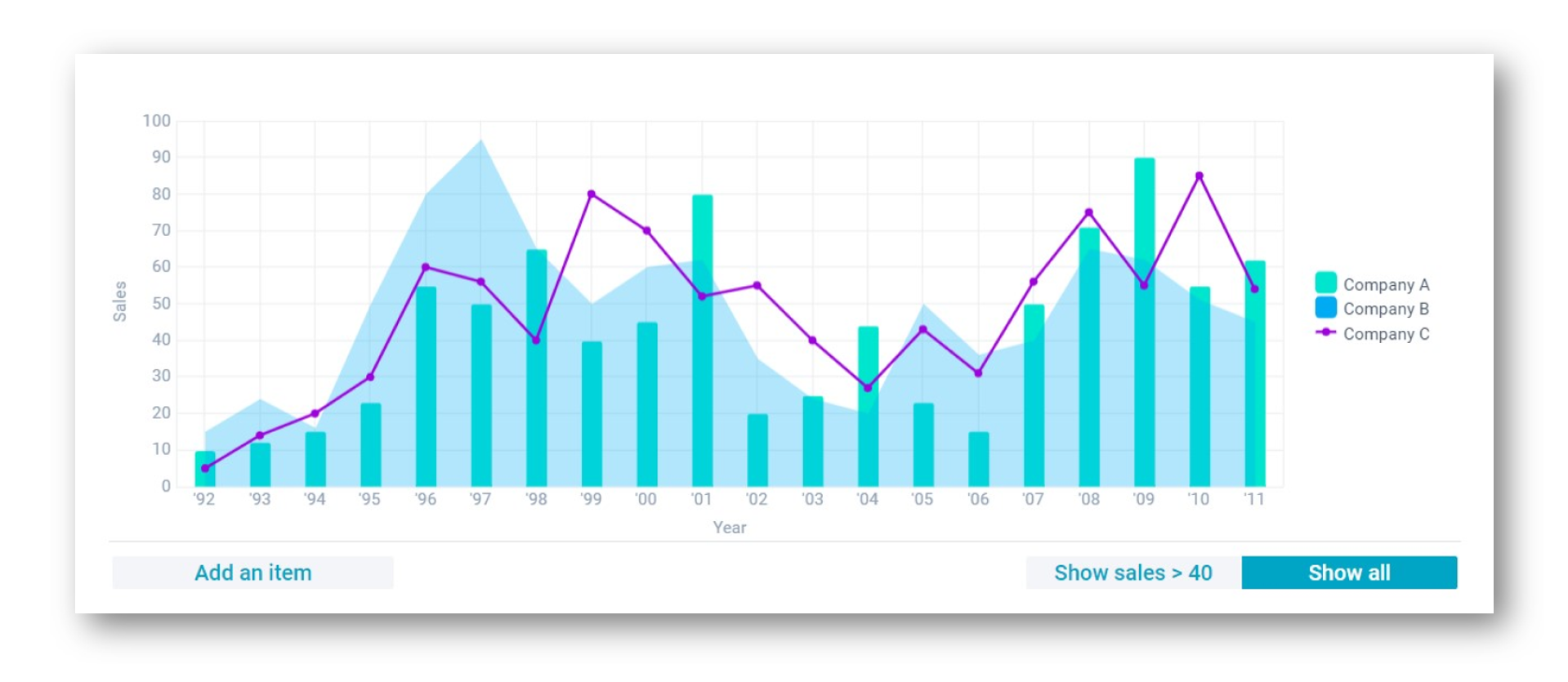Tech
A Developer’s Perspective On JavaScript Charts for Financial Data Visualization

The need for precise, dynamic, and high-performance charting tools cannot be overstated. With the rise of big data and the demand for real-time analytics, developers are increasingly turning to specialized JavaScript chart libraries to meet the sophisticated needs of the finance industry. This article explores how JavaScript charts are being optimized for financial data visualization, based on insights and expertise from developers deeply involved in this field.
Introduction to JavaScript Chart Libraries
JavaScript chart libraries have evolved significantly over the years, moving from basic line and bar charts to highly complex and interactive visualization tools. The primary drivers of this evolution are the requirements of industries such as finance, where the ability to visualize large datasets with high precision and in real-time is crucial. These libraries leverage WebGL and WebAssembly to render graphics directly on the browser, ensuring both speed and scalability.
The Importance of Performance
One of the most critical aspects of financial data visualization is performance. Financial datasets can be enormous, often containing millions of data points. The ability to handle these datasets without compromising on speed or interactivity is a primary concern for developers. Modern JavaScript charts use advanced graphics engines that are hardware-accelerated to render these vast datasets efficiently.
For instance, a high-performance JavaScript charting tool can plot millions of data points in various chart types, such as line, scatter, or candlestick charts, and update them in real-time. This capability is particularly beneficial for applications in financial trading, where milliseconds can make a significant difference.
Handling Complex Financial Data
Financial data visualization requires more than just plotting data points on a graph. It involves complex interactions, such as hovering over data points to get detailed information, selecting specific ranges for in-depth analysis, and linking multiple charts to create comprehensive dashboards.
Developers utilize callbacks on series hover, selection, and data-point updates to provide a seamless user experience. This interactivity allows users to delve deeper into the data, uncovering trends and insights that are crucial for making informed financial decisions.
Creating Interactive Dashboards
Financial analysts often rely on dashboards that present a holistic view of various datasets. JavaScript chart libraries facilitate the creation of rich, interactive dashboards by linking multiple charts. This linking ensures synchronized zooming, panning, and cursor movements across different charts, providing a unified view of the data.
For example, a financial dashboard might include a line chart showing stock prices over time, a candlestick chart for detailed price movements, and a bar chart for trading volumes. By linking these charts, users can zoom into a specific time period on one chart and see the corresponding data on the others, enhancing their analytical capabilities.
Customization and Flexibility
Customization is another critical factor in financial data visualization. Different financial applications have unique requirements, and a one-size-fits-all approach does not work. JavaScript chart libraries offer extensive customization options, allowing developers to tailor the charts to meet specific needs.
This customization includes the ability to create custom annotations, configure tooltips, and style charts according to the application’s branding. Annotations are particularly useful for highlighting significant events in financial data, such as earnings reports or market crashes, providing users with additional context.
Advanced Features for Financial Charts
JavaScript chart libraries come with a host of advanced features that are specifically beneficial for financial data visualization. These include multiple axis types, real-time updates, and sophisticated zooming and panning capabilities.
Multiple axes allow for the plotting of different datasets on the same chart, each with its own scale. For instance, a chart might show stock prices on the primary Y-axis and trading volume on a secondary Y-axis. Real-time updates ensure that the data is always current, which is essential for financial applications where timely information is paramount.
Zooming and panning capabilities enable users to focus on specific data ranges without losing the context of the overall dataset. These features, combined with the ability to animate transitions, make the charts not only functional but also visually appealing.
The Role of Annotations and Markers
Annotations and markers play a vital role in financial data visualization by providing additional insights directly on the charts. Developers can place various types of annotations, such as lines, boxes, and text, at specific data points or relative coordinates. These annotations can be interactive, allowing users to click, drag, and resize them, making the charts more informative and user-friendly.
For example, in a stock price chart, annotations can mark significant events like dividend payments or stock splits, giving users a clearer understanding of the factors influencing price movements.
Ensuring Accessibility
Accessibility is becoming an increasingly important consideration in software development, and financial data visualization is no exception. JavaScript chart libraries are incorporating features to ensure that the charts are accessible to all users, including those with disabilities.
This includes support for high-contrast modes, keyboard navigation, and screen readers. By making charts accessible, developers can ensure that a broader audience can benefit from the insights provided by financial data visualization tools.
Conclusion
In conclusion, optimizing JavaScript charts for financial data visualization involves a combination of performance, interactivity, customization, and accessibility. Developers play a crucial role in leveraging advanced charting libraries to create tools that meet the sophisticated needs of the finance industry. By focusing on these key aspects, they can provide financial analysts and traders with the powerful visualization tools they need to make informed decisions in an increasingly data-driven world.
This article was written with the assistance of a developer to ensure accuracy and depth in covering the technical aspects of JavaScript chart optimization for financial data visualization.
